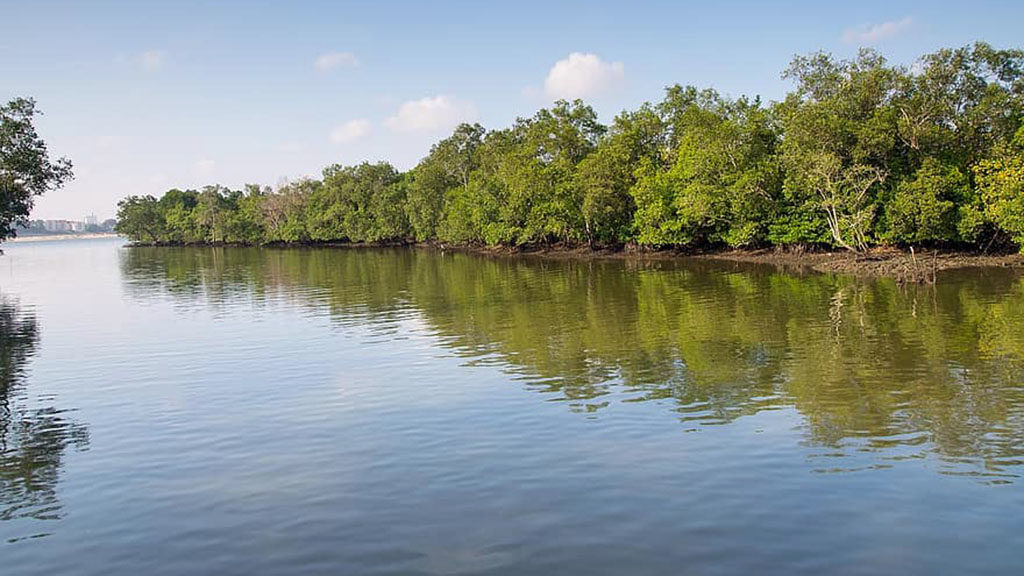
“Streamlined” environmental protections, strangled wetlands
While much of our attention is focused on coping with the fallout of COVID-19, governments around Australia and the region are turning hungry eyes to the “development potential” of critical wetland ecosystems.
For the past several months, Australia’s federal government has been pushing to ‘streamline’ the environmental approvals process by devolving responsibility for environmental protection to state governments. The proposal has drawn the ire of many environmental groups around Australia and internationally, who fear it is an attempt to weaken protections for Australia’s already struggling ecosystems, many of which are world heritage-listed.
If the recent treatment of several of Australia’s important wetlands at the hands of state and federal governments is anything to go by, these groups are right to be alarmed.
Back in 2018, Foreground reported on the development threat to fragile wetland habitat in Queensland’s Moreton Bay. Despite being listed under the Ramsar Convention as a habitat of international importance, vital areas for migratory birds were put at risk through a push by property group Walker Corporation to reclassify wetlands for a mixed housing and commercial development.
The Queensland state government has advocated on behalf of Walker Corporation to amend the Ramsar boundary. In 2019, The Guardian reported on confidential letters between the state and federal government advocating for re-drawing boundaries on account of “mapping anomalies”, and that argued the Toondah Harbour development was of “urgent national interest”. Correspondence from then deputy premier, Jackie Trad, and then environment minister, Steven Miles, suggests the federal government redefine the wetland boundary to allow the Toondah Harbour development.
In August this year, The Guardian revealed that in 2016 Walker Group lobbied Josh Frydenberg, then environmental minister and current treasurer, to remove environmental protections in order to facilitate the development. Documents obtained by The Guardian show Frydenberg and senior officials met with executives from Walker Group shortly after the 2016 federal election, where the claims Ramsar boundaries were not well mapped and that the development was in the urgent national interest were echoed. More than 40 hectares of existing wetland habitat would need to be reclaimed. The Guardian also noted that Walker Group were major donors to the coalition’s July election campaign.
In Victoria, meanwhile, The Age has reported on burgeoning tension between state and federal governments over a gas project located on the Mornington Peninsula that locals are concerned could put Ramsar-listed wetlands in Western Port Bay at risk.
Federal health minister Greg Hunt, who also served as environment minister from 2013 until 2016, expressed disappointment in the state Labor government for continuing its environmental assessment process of the AGL gas terminal through the coronavirus pandemic.
Mr Hunt’s electorate takes in the proposed project site.
Hunt, along with resident groups, environmentalists and lawyers, said the community was unable to effectively participate in discussions relating to the planned LNG terminal, due to metropolitan Melbourne’s stage 4 COVID-19 lockdowns, in place since early August.
Sadly, the Australian cases pale in comparison to the environmental fallout of ongoing wetland development in Cambodia.
A satellite city planned on the outskirts of the capital Phnom Penh jeopardises the viability of Beoung Tompoun and Cheung Ek wetlands, important ecological sites that also sustain over 1000 rural families. The habitat is the site of the multi-billion dollar proposed ING City, where an estimated 77 million cubic metres of sand may be dumped to fill the wetlands, which experts believe could also lead to dramatically worse flooding and pollution events for Phnom Penh.
Not all governments in the region though are intent on paving over their wetlands with concrete. In some good news, Singapore has recently announced it will safeguard over 400 hectares of its wetlands as the Sungei Buloh Nature Park.
An important habitat for migratory birds, Sungei Buloh becomes the city state’s second nature park network, and part of the country’s pledge to transition from the “city in a garden” development model that Singapore’s former prime minister Lee Kuan Yew famously pioneered to a “city in nature” model.
As The Straits Times reports, the wetland park will be complemented by a 150-kilometre recreational route around Singapore that will connect various green spaces through trails and parks. Singapore expects the route to be completed by 2035.


